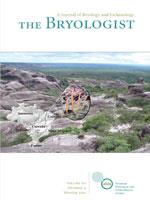Many of the species living on our planet remain undiscovered, among these over one million Fungi. One approach to account for undescribed species is the search in unusual habitats. Here we report on the unexpected finding of a new species of Lepidostroma (Atheliales: Lepidostromataceae) from the semi-arid Caatinga biome in northeastern Brazil. It is only the fifth species of this enigmatic genus and only the third from the Neotropics, and the fourth species to be described within the past four years. DNA was extracted and the ITS and nuLSU partitions of the nuclear rDNA were sequenced. A phylogenetic tree was computed under a maximum likelihood framework using an alignment of selected Basidiomycota (Atheliales, Agaricales, Boletales, Russulales, Cantharellales). The new species differs from other species in the genus by the crustose rather than squamulose thallus. Molecular sequence data place the species as unsupported sister to Lepidostroma akagerae. The crustose thallus resembles that of Multiclavula species, which are phylogenetically unrelated. This study underlines that novel lichenized Fungi can be discovered in unusual habitats. The Caatinga vegetation is to a large extent threatened by habitat destruction and the discovery of such an unusual species underlines the importance of this unique biome for conserving diversity in tropical South America. Systematically, the new species is relevant because it represents the only species of Lepidostroma with a crustose, Multiclavula-like thallus, presenting a striking example of parallel evolution in lichenized Basidiomycota.
BioOne.org will be down briefly for maintenance on 17 December 2024 between 18:00-22:00 Pacific Time US. We apologize for any inconvenience.
How to translate text using browser tools
14 December 2012
Unexpected discovery of a novel basidiolichen in the threatened Caatinga biome of northeastern Brazil
Marcelo A. Sulzbacher,
Iuri G. Baseia,
Robert Lücking,
Sittiporn Parnmen,
Bibiana Moncada
ACCESS THE FULL ARTICLE

The Bryologist
Vol. 115 • No. 4
Winter 2012
Vol. 115 • No. 4
Winter 2012
Lichenized Basidiomycota
Neotropics
thallus morphology




